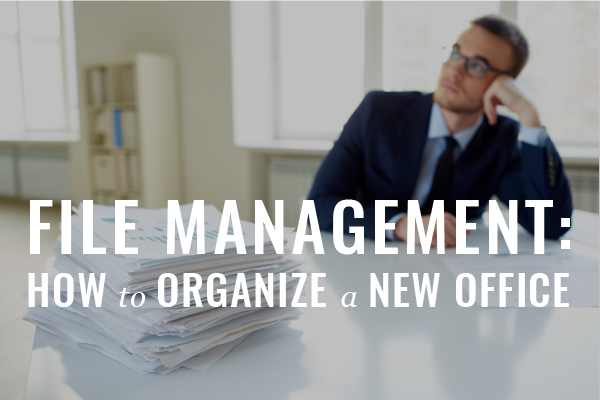When I review attorneys’ document filing systems, I often find that the case documents are not sorted by type, and are not placed in chronological order. Often critical documents are not indexed and tabbed in a manner that allows the documents to be found quickly. You must implement good file organization from the beginning so that you can find the documents you need when you are busy.
Although different practice areas tend to have slightly different filing systems there are basic organizational procedures that will increase your efficiency, and, just as importantly, make you appear organized and prepared to your client, opposing counsel, and judges. A fairly simple system will work to resolve filing organization problems even if you do not have secretarially help. First, for each practice area you should make a list of all the critical types of documents that you will have in the file. For example, my personal injury litigation list would contain: 1) correspondence; 2) pleadings and discovery requests/answers; 3) my client’s documents; 4) my client’s medical records; 5) documents produced by the defendant(s); 6) expenses; 7) plaintiff expert report; 8) defendant expert reports; and 9) deposition transcripts. I would use individual manila drop folders for each document category listed except for pleadings (which are most easily kept in a pleadings binder). Within the correspondence and pleadings folders (some attorneys use different colors for different types of documents) the documents should be kept in chronological order – most recent on top for easy access. The entire case is then kept in one expandable file folder to keep things together. This type of system can and should be used, in some fashion, with every case. You can also use three-ring binders, or other binder systems, in a similar fashion, but I find them to be more expensive.
Some attorneys tell me that this system is too complicated for the high volume practice areas they handle. However, even for these high volume practice areas, the same organizational effectiveness can be duplicated using the smaller partition file folders (two to six partitions) with binders on each partition. The partitions are then used like the individual drop folders discussed above. To solve the issue of not having time to index and tab important documents such as the pleadings or the court orders I suggest another easy solution. When a file is started, a pre-numbered set of tabs is placed in the pleadings binder or partition and pre-numbered index is created and placed on top. When a document is added to the pleadings it is placed in the appropriate spot in the tabs and a description can be hand-written in the pre-existing index.
Once an organization system has been developed for paper files then it should be implemented as closely as possible with electronic files to ensure consistency for all filing systems. A separate folder should be made for clients, each client should have a subfolder, and each sub-folder should have sub-folders consistent with the file folders. A time saving mechanism exists to have a blank folder set up with all subfolders that may be copied each time a client is added. Within the folders, a consistent naming protocol must be created. My preference is to name documents so I can find them both chronologically and by description. I prefer the following naming protocol for electronic files. Each document is named as follows: year, month, and day and document description. For example, if I created and sent a letter on July 7, 2008, to opposing counsel, in which I set forth my settlement demand, I would name the document: 080707L settlement demand to defense counsel. A similar protocol you may see is 2008_07_07 settlement letter from ____ to defense counsel. This protocol ensures that documents are kept in a chronological order. When this type of protocol is used with a desktop search engine documents can be found quickly by perusing the appropriate file or with the desktop search engine.
For further help with developing and implementing a filing system/procedure for your office you can start here to schedule a meeting with an advisor.




